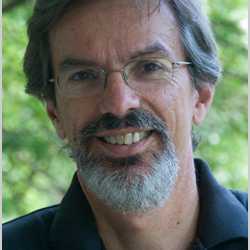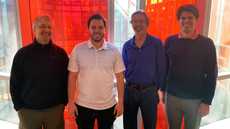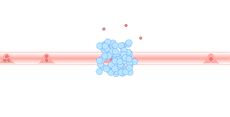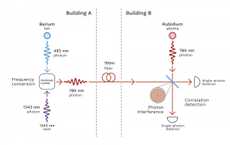April 26, 2021
Photons—the quantum particles of light—normally don’t have any sense of personal space. A laser crams tons of photons into a tight beam, and they couldn’t care less that they are packed on top of each other. Two beams can even pass through each other without noticing. This is all well and good when making an extravagant laser light show or using a laser level to hang a picture frame straight, but for researchers looking to develop quantum technologies that require precise control over just one or two photons, this lack of interaction often makes life difficult. Now, a group of UMD researchers has come together to create tailored interactions between photons in an experiment where, at least for photons, two’s company but three’s a crowd. The technique builds on many previous experiments that use atoms as intermediaries to form connections between photons that are akin to the bonds between protons, electrons and other kinds of matter. These interactions, along with the ability to control them, promises new opportunities for researchers to study the physics of exotic interactions and develop light-based quantum technologies.

![Four men stand in a row in front of alternating white and red windows.]()
![]()
![]()


